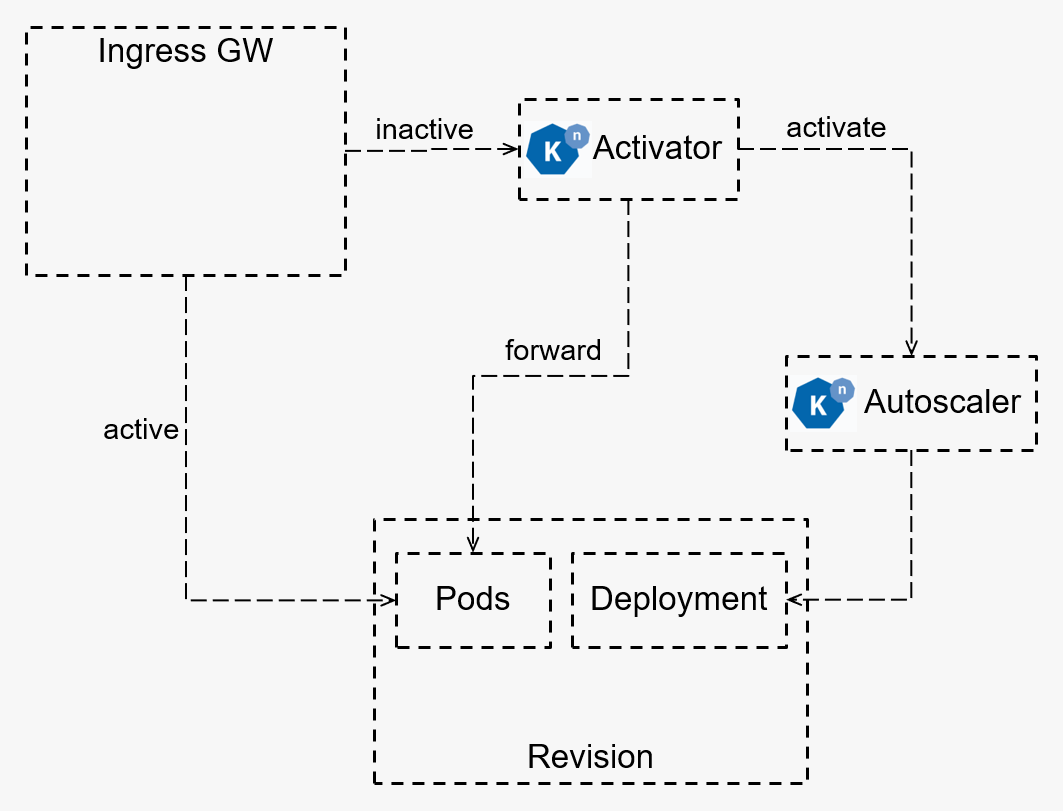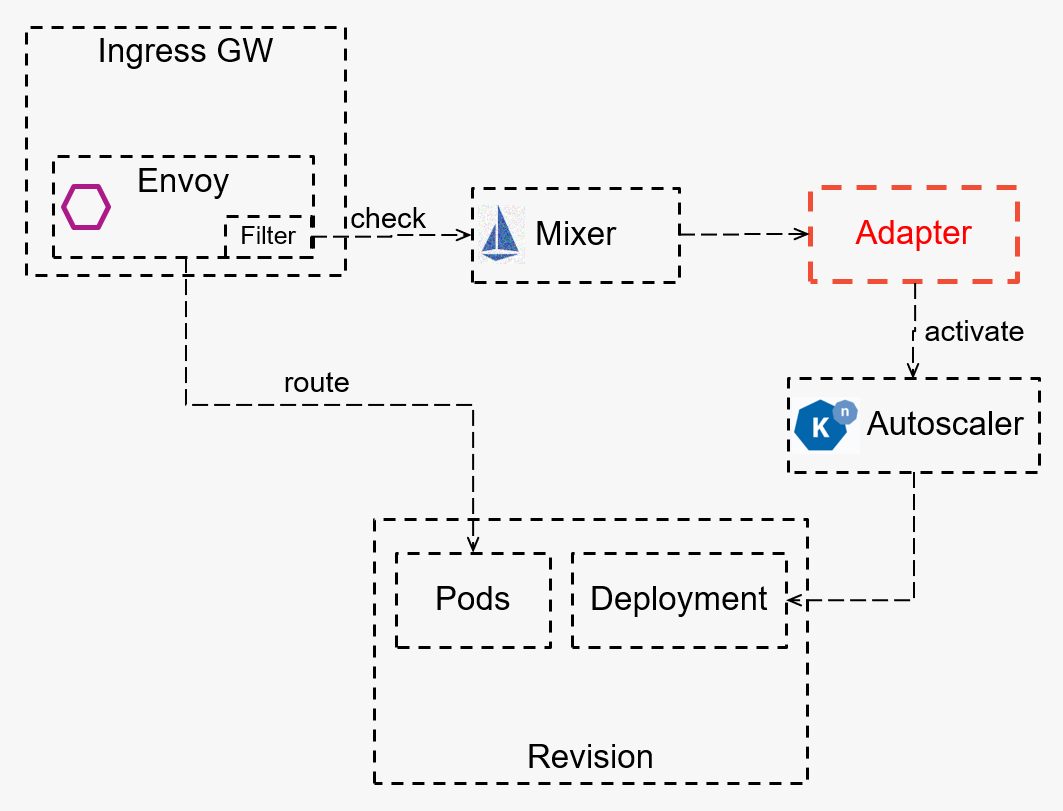Mixer Adapter for Knative
Demonstrates a Mixer out-of-process adapter which implements the Knative scale-from-zero logic
This post demonstrates how you can use Mixer to push application logic into Istio. It describes a Mixer adapter which implements the Knative scale-from-zero logic with simple code and similar performance to the original implementation.
Knative serving
Knative Serving builds on Kubernetes to support deploying and serving of serverless applications. A core capability of serverless platforms is scale-to-zero functionality which reduces resource usage and cost of inactive workloads. A new mechanism is required to scale from zero when an idle application receives a new request.
The following diagram represents the current Knative architecture for scale-from-zero.
The traffic for an idle application is redirected to Activator component by programming Istio with VirtualServices
and DestinationRules. When Activator receives a new request, it:
- buffers incoming requests
- triggers the Autoscaler
- redirects requests to the application after it has been scaled up, including retries and load-balancing (if needed)
Once the application is up and running again, Knative restores the routing from Activator to the running application.
Mixer adapter
Mixer provides a rich intermediation layer between the Istio components and infrastructure backends. It is designed as a stand-alone component, separate from Envoy, and has a simple extensibility model to enable Istio to interoperate with a wide breadth of backends. Mixer is inherently easier to extend than Envoy is.
Mixer is an attribute processing engine that uses operator-supplied configuration to map request attributes from the Istio proxy into calls to the infrastructure backends systems via a pluggable set of adapters. Adapters enable Mixer to expose a single consistent API, independent of the infrastructure backends in use. The exact set of adapters used at runtime is determined through operator configuration and can easily be extended to target new or custom infrastructure backends.
In order to achieve Knative scale-from-zero, we use a Mixer out-of-process adapter to call the Autoscaler. Out-of-process adapters for Mixer allow developers to use any programming language and to build and maintain your extension as a stand-alone program without the need to build the Istio proxy.
The following diagram represents the Knative design using the Mixer adapter.
In this design, there is no need to change the routing from/to Activator for an idle application as in the original Knative setup. When the Istio proxy represented by the ingress gateway component receives a new request for an idle application, it informs Mixer, including all the relevant metadata information. Mixer then calls your adapter which triggers the Knative Autoscaler using the original Knative protocol.
Istio’s use of Mixer adapters makes it possible to replace otherwise complex networking-based application logic with a more straightforward implementation, as demonstrated in the Knative adapter.
When the adapter receives a message from Mixer, it sends a StatMessage directly to Autoscaler
component using the Knative protocol.
The metadata information (namespace and service name) required by Autoscaler are transferred by Istio proxy to
Mixer and from there to the adapter.
Summary
I compared the cold-start time of the original Knative reference architecture to the new Istio Mixer adapter reference architecture. The results show similar cold-start times. The implementation using the Mixer adapter has greater simplicity. It is not necessary to handle low-level network-based mechanisms as these are handled by Envoy.
The next step is converting this Mixer adapter into an Envoy-specific filter running inside an ingress gateway. This will allow to further improve the latency overhead (no more calls to Mixer and the adapter) and to remove the dependency on the Istio Mixer.

